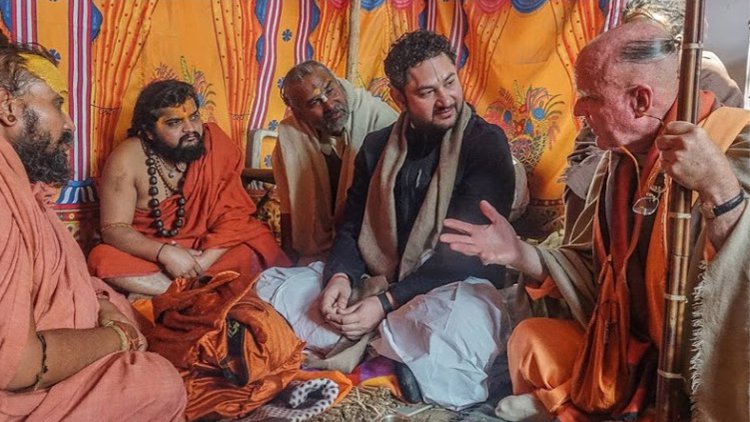https://lh3.googleusercontent.com/xSlzU0FM0pxRtvlr76gZ6GZBEodPlcheBwhjBo8-oC6s8T8cjNQl_QBR8Bcs5dyV67XcfGkSl_DcR-KQCYb7DQqbEcA=s300
0
0
Raja-kumari dasi
https://lh3.googleusercontent.com/xSlzU0FM0pxRtvlr76gZ6GZBEodPlcheBwhjBo8-oC6s8T8cjNQl_QBR8Bcs5dyV67XcfGkSl_DcR-KQCYb7DQqbEcA=s300
Raja-kumari dasi2024-04-04 05:57:172024-12-28 15:16:09"Я видел Шри Гаурачандру..." / Pekhalu Gauracandra Nata Raja
https://lh3.googleusercontent.com/xSlzU0FM0pxRtvlr76gZ6GZBEodPlcheBwhjBo8-oC6s8T8cjNQl_QBR8Bcs5dyV67XcfGkSl_DcR-KQCYb7DQqbEcA=s300
0
0
Raja-kumari dasi
https://lh3.googleusercontent.com/xSlzU0FM0pxRtvlr76gZ6GZBEodPlcheBwhjBo8-oC6s8T8cjNQl_QBR8Bcs5dyV67XcfGkSl_DcR-KQCYb7DQqbEcA=s300
Raja-kumari dasi2024-03-24 05:18:362024-05-31 10:54:09Gaura Purnima Meditation - "Balarama Kanai"
https://lh3.googleusercontent.com/xSlzU0FM0pxRtvlr76gZ6GZBEodPlcheBwhjBo8-oC6s8T8cjNQl_QBR8Bcs5dyV67XcfGkSl_DcR-KQCYb7DQqbEcA=s300
0
0
Raja-kumari dasi
https://lh3.googleusercontent.com/xSlzU0FM0pxRtvlr76gZ6GZBEodPlcheBwhjBo8-oC6s8T8cjNQl_QBR8Bcs5dyV67XcfGkSl_DcR-KQCYb7DQqbEcA=s300
Raja-kumari dasi2021-11-02 07:55:342021-12-23 18:06:28The Secrets of Gokula /Секреты Гокулы
https://lh3.googleusercontent.com/xSlzU0FM0pxRtvlr76gZ6GZBEodPlcheBwhjBo8-oC6s8T8cjNQl_QBR8Bcs5dyV67XcfGkSl_DcR-KQCYb7DQqbEcA=s300
0
0
Raja-kumari dasi
https://lh3.googleusercontent.com/xSlzU0FM0pxRtvlr76gZ6GZBEodPlcheBwhjBo8-oC6s8T8cjNQl_QBR8Bcs5dyV67XcfGkSl_DcR-KQCYb7DQqbEcA=s300
Raja-kumari dasi2021-08-05 13:02:402021-08-09 08:24:27Поддержание наших традиций
https://lh3.googleusercontent.com/xSlzU0FM0pxRtvlr76gZ6GZBEodPlcheBwhjBo8-oC6s8T8cjNQl_QBR8Bcs5dyV67XcfGkSl_DcR-KQCYb7DQqbEcA=s300
0
0
Raja-kumari dasi
https://lh3.googleusercontent.com/xSlzU0FM0pxRtvlr76gZ6GZBEodPlcheBwhjBo8-oC6s8T8cjNQl_QBR8Bcs5dyV67XcfGkSl_DcR-KQCYb7DQqbEcA=s300
Raja-kumari dasi2021-03-03 09:49:392021-03-22 09:58:35Лишь два принципиальных наставления
https://lh3.googleusercontent.com/xSlzU0FM0pxRtvlr76gZ6GZBEodPlcheBwhjBo8-oC6s8T8cjNQl_QBR8Bcs5dyV67XcfGkSl_DcR-KQCYb7DQqbEcA=s300
0
0
Raja-kumari dasi
https://lh3.googleusercontent.com/xSlzU0FM0pxRtvlr76gZ6GZBEodPlcheBwhjBo8-oC6s8T8cjNQl_QBR8Bcs5dyV67XcfGkSl_DcR-KQCYb7DQqbEcA=s300
Raja-kumari dasi2021-02-06 13:52:162025-01-07 17:13:17Разница в отношении к трудностям Вайшнава и не-Вайшнава / Pertinent Advice
https://lh3.googleusercontent.com/xSlzU0FM0pxRtvlr76gZ6GZBEodPlcheBwhjBo8-oC6s8T8cjNQl_QBR8Bcs5dyV67XcfGkSl_DcR-KQCYb7DQqbEcA=s300
0
0
Raja-kumari dasi
https://lh3.googleusercontent.com/xSlzU0FM0pxRtvlr76gZ6GZBEodPlcheBwhjBo8-oC6s8T8cjNQl_QBR8Bcs5dyV67XcfGkSl_DcR-KQCYb7DQqbEcA=s300
Raja-kumari dasi2021-01-15 14:23:242021-03-22 14:25:54Склоняясь к вашим стопам
https://lh3.googleusercontent.com/xSlzU0FM0pxRtvlr76gZ6GZBEodPlcheBwhjBo8-oC6s8T8cjNQl_QBR8Bcs5dyV67XcfGkSl_DcR-KQCYb7DQqbEcA=s300
0
0
Raja-kumari dasi
https://lh3.googleusercontent.com/xSlzU0FM0pxRtvlr76gZ6GZBEodPlcheBwhjBo8-oC6s8T8cjNQl_QBR8Bcs5dyV67XcfGkSl_DcR-KQCYb7DQqbEcA=s300
Raja-kumari dasi2021-01-04 15:28:502021-03-22 15:37:28Amazon Jungle 1989
https://lh3.googleusercontent.com/xSlzU0FM0pxRtvlr76gZ6GZBEodPlcheBwhjBo8-oC6s8T8cjNQl_QBR8Bcs5dyV67XcfGkSl_DcR-KQCYb7DQqbEcA=s300
0
0
Raja-kumari dasi
https://lh3.googleusercontent.com/xSlzU0FM0pxRtvlr76gZ6GZBEodPlcheBwhjBo8-oC6s8T8cjNQl_QBR8Bcs5dyV67XcfGkSl_DcR-KQCYb7DQqbEcA=s300
Raja-kumari dasi2019-02-26 17:05:312019-03-19 04:51:49“May Mother Ganges Bless You Today”
https://lh3.googleusercontent.com/xSlzU0FM0pxRtvlr76gZ6GZBEodPlcheBwhjBo8-oC6s8T8cjNQl_QBR8Bcs5dyV67XcfGkSl_DcR-KQCYb7DQqbEcA=s300
0
0
Raja-kumari dasi
https://lh3.googleusercontent.com/xSlzU0FM0pxRtvlr76gZ6GZBEodPlcheBwhjBo8-oC6s8T8cjNQl_QBR8Bcs5dyV67XcfGkSl_DcR-KQCYb7DQqbEcA=s300
Raja-kumari dasi2019-02-12 06:54:342021-01-04 16:55:38At the house of Advaita Acarya / В доме Адвайты Ачарйи
Scroll to top












